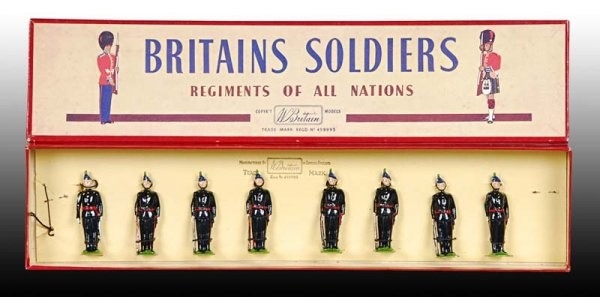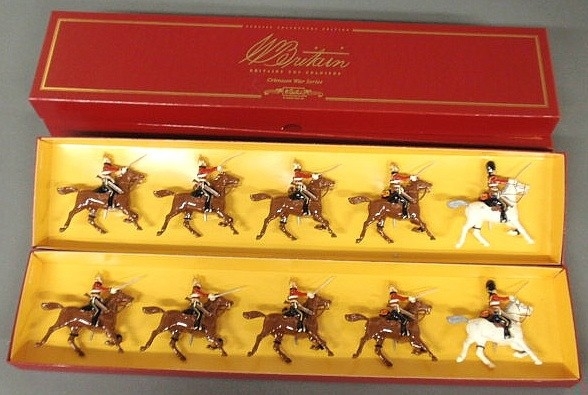Historically accurate toy figures for collecting and play, toy soldiers have been around since the 18th century, and represent fighting men from all ages of history and all corners of the world.
History of Lead Soldiers
The earliest mass-produced figures were made in the 18th century in Germany. These were referred to as “flats, and were produced by pouring a tin alloy through a two piece mold that was clamped together. Semi-flats soon followed. These were more dimensional that flats, but not as three dimensional as solids, which were cast in a mold and made of solid led alloy. Solids were cast as one piece or parts that were then assembled, and soon became the most popular form for figures.
Lead Soldiers by Britains
Vintage and antique toy soldiers for play and collecting are loved by boys young and old, and nobody did them better than Britains. Famous for quality and knowledge of authentic arms and uniforms, Britains was established in 1845 in London after French and German manufacturers demonstrated the success of mass produced figures as toys for children and models for collectors.
Hollow Cast Lead Soldiers
In 1893, Britains had a major production breakthrough with the development of a technique for hollow casting. In this process, the outside layer cooled forming a skin and the excess still-liquid lead was poured out of a hole. In the days of cheap labor and expensive materials, hollow figures meant that Britains could manufacture their figures for lower costs than their German counterparts.
Dimestore & Plastic Toy Soldiers
Britains still manufactures popular toy soldiers, although they ceased the production of lead toys in the 1960’s, switching emphasis to plastic. In the 1920s through the 1960s, little boys could purchase bags of plastic dimestore toy soldiers for pennies. These plastic soldiers are also collectible. Look for Barclay, Manoil and Jones toy soldiers in hollow cast lead, Auburn figures in rubber, and Marx soldiers in plastic.
In 1972, Britians reintroduced the metal soldier. Collectors look for complete sets in original boxes, although any vintage toy soldier in good condition is desirable, depending on amount of paint loss and rarity.
Toy Soldier Condition & Values
Most antique and vintage toy soldiers, whether plastic or metal, saw a lot of action, and consequently, condition is an issue. These soldiers suffer from paint loss, battle wounds in the form of chips and missing limbs, and broken swords and firearms. Hard core toy soldier collectors express condition as a percentage; the higher the percentage, the greater the amount of original paint on the figure. Top dollar goes to the toy soldiers with the most original paint.
Toy soldiers have been made to represent every era of history, including Roman foot soldiers, Napoleonic fighting men, and American and British Revolutionary War soldiers. Made of plastic, metal or rubber, toy soldiers are popular as both playthings and collectibles.
-by p4A Contributing Editor Susan Cramer.
Reference & Further Recommended Reading:
To search the Prices4Antiques antiques reference database for valuation information on hundreds of thousands of antiques and fine art visit our homepage www.prices4antiques.com







No comments
Comments feed for this article